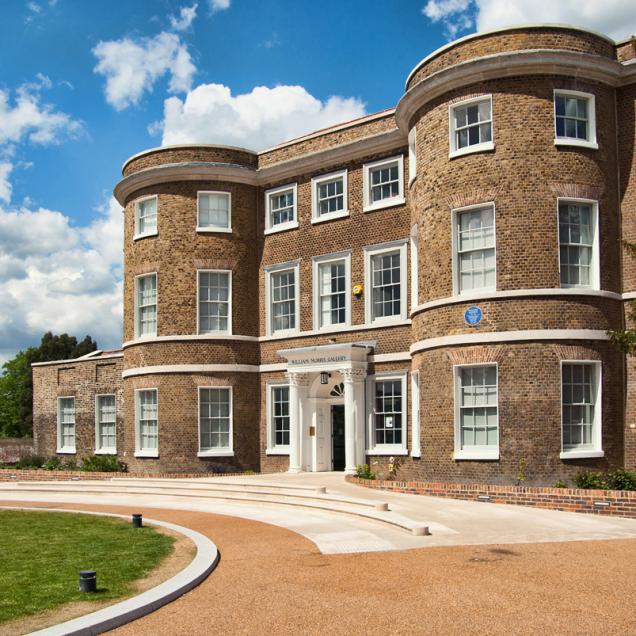

On the year's hottest day, there was a single cool space in the reopened William Morris Gallery, coincidentally the only one not given over to the work of Morris and his coeval followers. In an air-conditioned room was Grayson Perry's Walthamstow Tapestry, so called for reasons I cannot discover, although apt since the WMG is in Morris's childhood home, Water House, in the London Borough of Walthamstow.
Its name apart, there are clear reasons for choosing Perry's as the first contemporary artwork to go on show at the new, improved WMG. Morris was famously one of the founders of the Arts and Crafts movement, which sought to raise the status of craft to art. Perry may not do his own embroidery, but the Walthamstow Tapestry is obviously crafted, and, since its designer won the 2003 Turner Prize, we must assume artistic as well. Morris was for the Common Man: "I do not want art for a few, any more than education for a few, or freedom for a few," he boomed – and Perry's work is unquestionably demotic. Unpleasantly so, even.
A tour of the WMG suggests that Arts and Crafts was, at heart, about the making and consuming of objects. Morris wanted to rescue industrialised man from the mill and set him to hand-crafting instead, his hours after the wheel or loom spent in cottages decked out with ladderback chairs and rush mats. These would ennoble him, taking him back to a prelapsarian time before the inventions of James Watt and Richard Arkwright.
Perry's vision, too, is of man-the-consumer, although, circa 2009, his story is one of brands: woven into the 15-metre batik-cum-Bayeux dystopia of the Walthamstow Tapestry are legends such as KFC, easyJet, Gucci and YouTube. Interspersed with these are images of the spoor of 21st-century London, among them used condoms, iPods, flick knives and suicide bomb-vests. No rush mats, no ladderback chairs.
Perry's view of the common man could not be more different from Morris's. Morris saw the urban poor as brutalised but redeemable; Perry sees them simply as brutish. There is something nasty about his view, like a middle-class couple on a Ryanair flight sniggering at fellow passengers with tattoos.
So what is Perry doing at the William Morris Gallery? Any one-man museum has to have an agenda, and the WMG is no exception. Along with its own revamp has gone one of Morris himself. Close your eyes and murmur his name and you will almost certainly see wallpaper and armchairs, things we tend to lump under the catch-all phrase, "Victoriana". The gallery means to update this view, even if it means linking its hero's name with that of a contemporary artist whose work would probably have had the ill-tempered Morris dancing with rage.
This bridging of the gap between the late 19th century and now also means a whole room for Frank Brangwyn, who served an apprenticeship at Morris & Co at the age of 15, painted over a thousand canvases, was knighted, and died in his 90th year in 1956, not long before Perry was born. Brangwyn was a fervent Morrisite and moving spirit behind the founding of the original William Morris Gallery in 1935, donating part of his own collection to the house. His big, splashy oil The Swans dominates a room upstairs. In the hall beyond it are pictures by Morris's friends and Pre-Raphaelite fellow-travellers, including Walter Crane and Ford Madox Brown.
Little of this review is about Morris himself, and that, curiously, is true of the new WMG. Before it shut for refurbishment, there was a feeling that the gallery was fading away, its opening times getting shorter and its visitors fewer. To justify its expenditure on the new house, Walthamstow council has taken Morris's ideas on educating the masses to heart. In rooms downstairs, you can do such Morris-like things as design your own stained-glass window or knot your own carpet. The shop sells Morris consumables, including fridge magnets. But Morris himself?
The WMG's old collection has been re-displayed, and other objects – Madox Brown's piano, the Socialist banner – shown for the first time. One room is given over to Morris's book publishing. Bits of folk art were brought back from his trips to Iceland in the 1870s, when he taught himself Icelandic and translated all the sagas. "If a chap can't compose an epic poem while weaving a tapestry," he wrote, "he'll never do any good at all." Who could not love him?